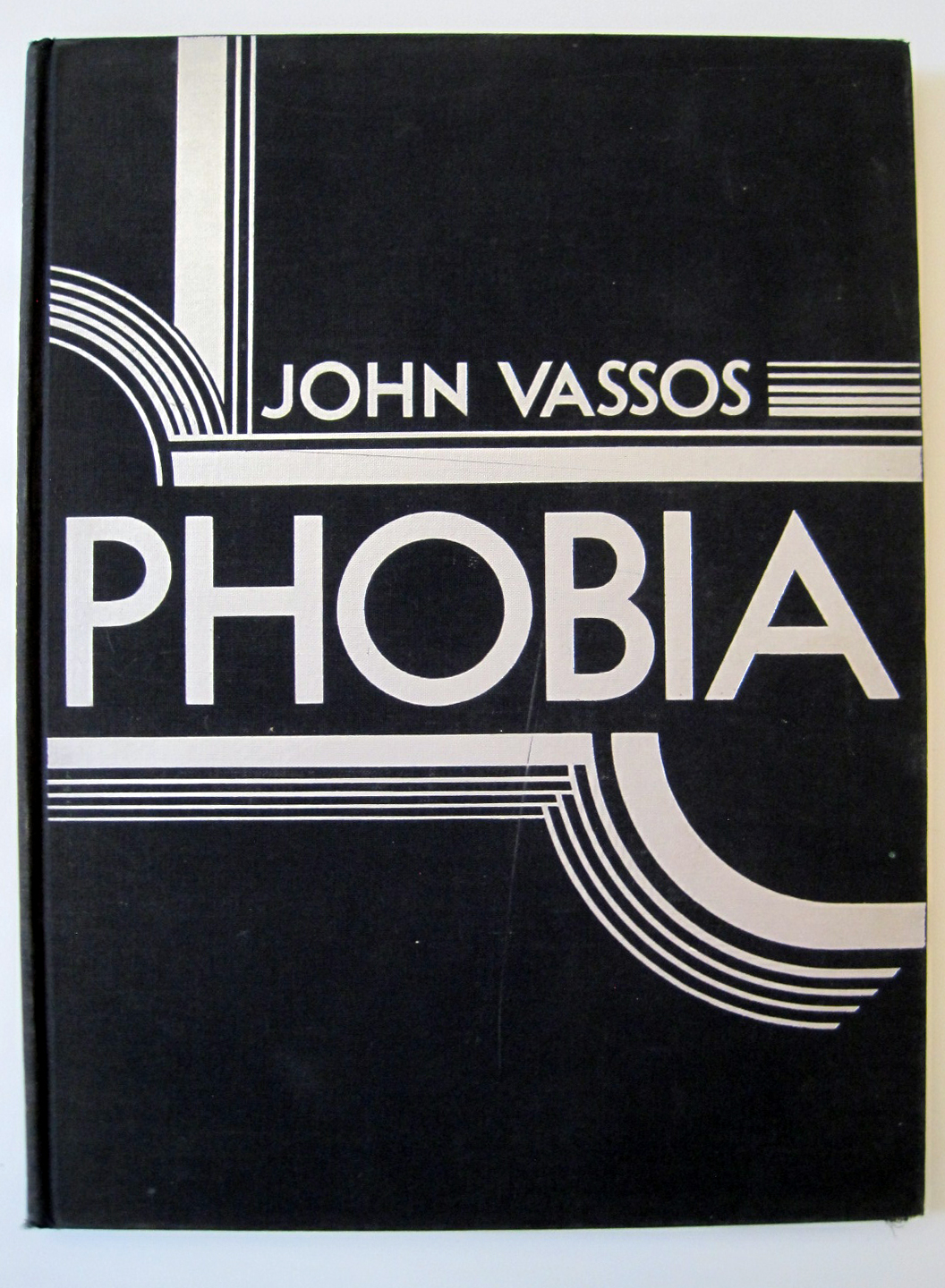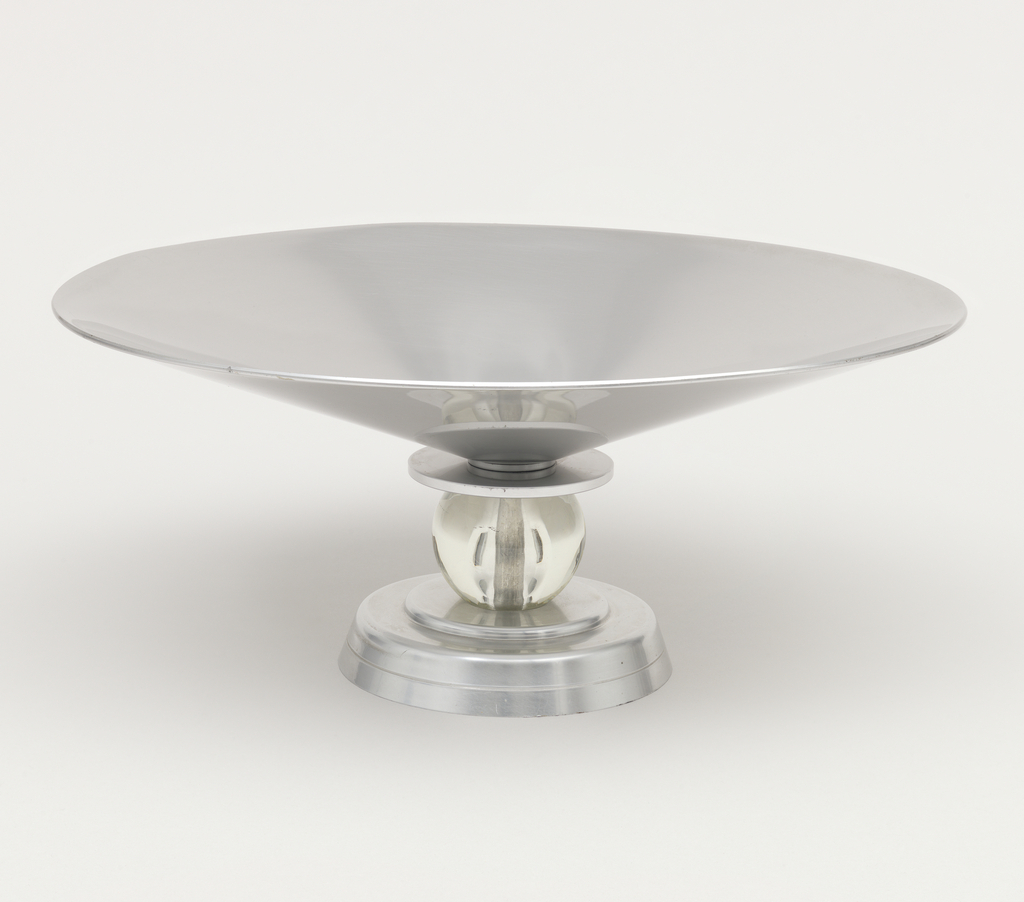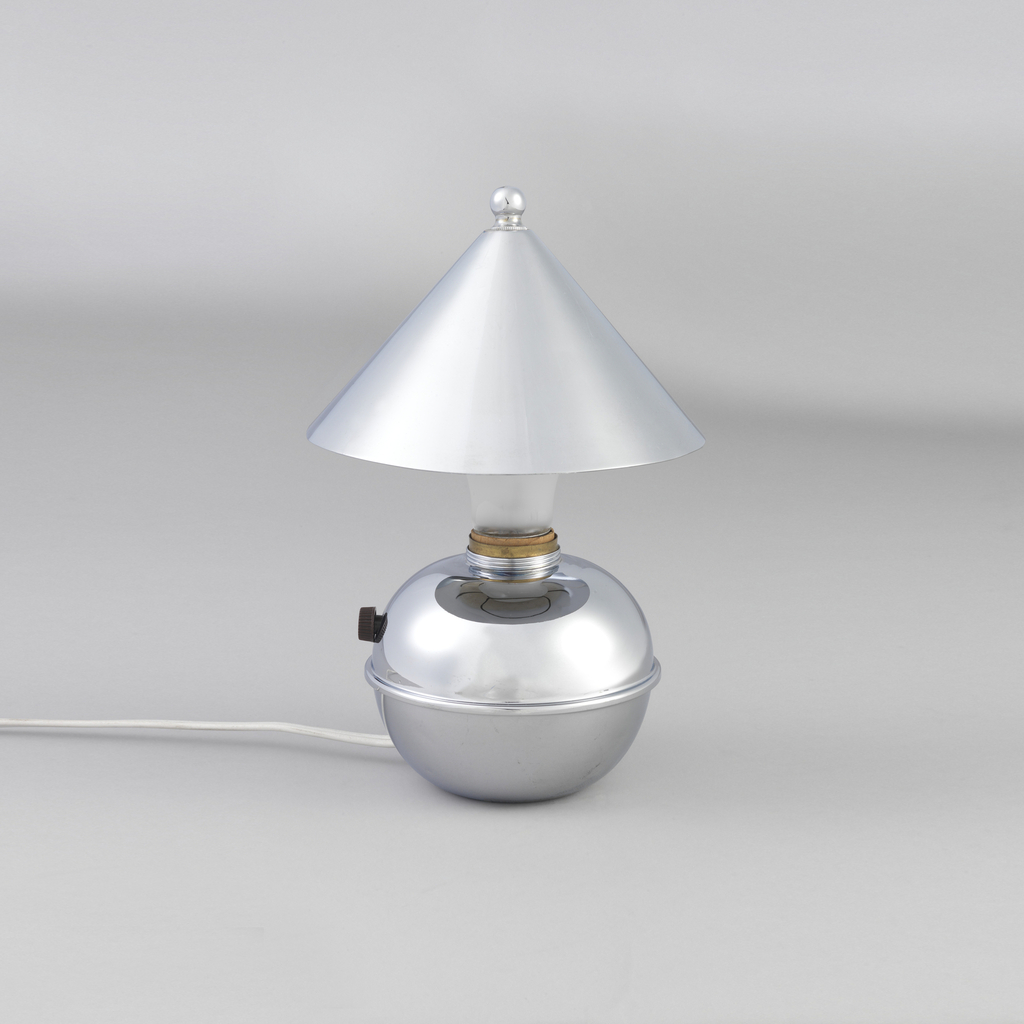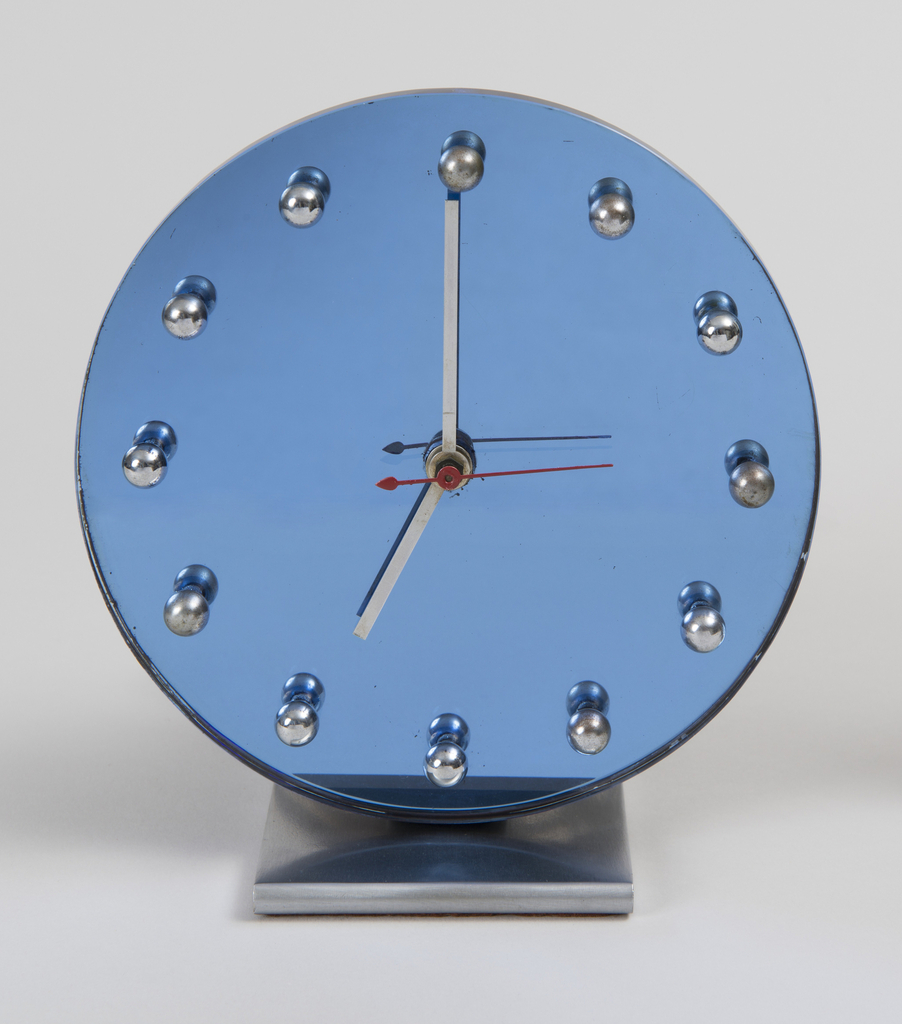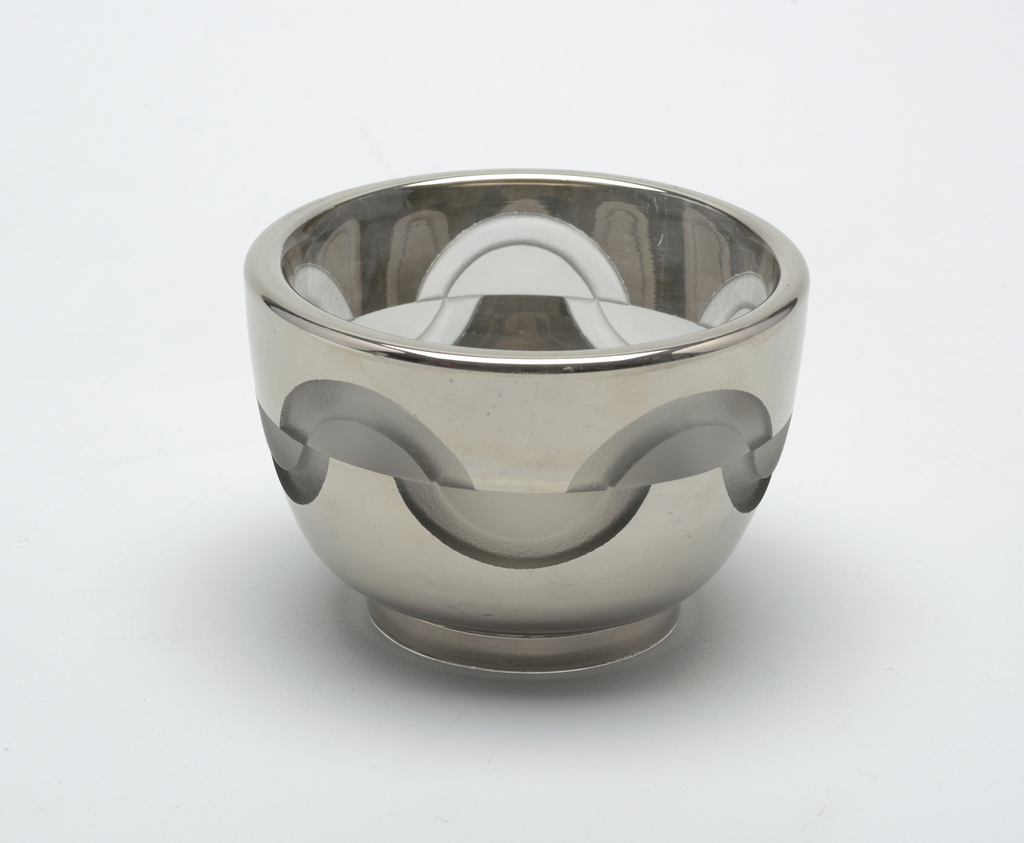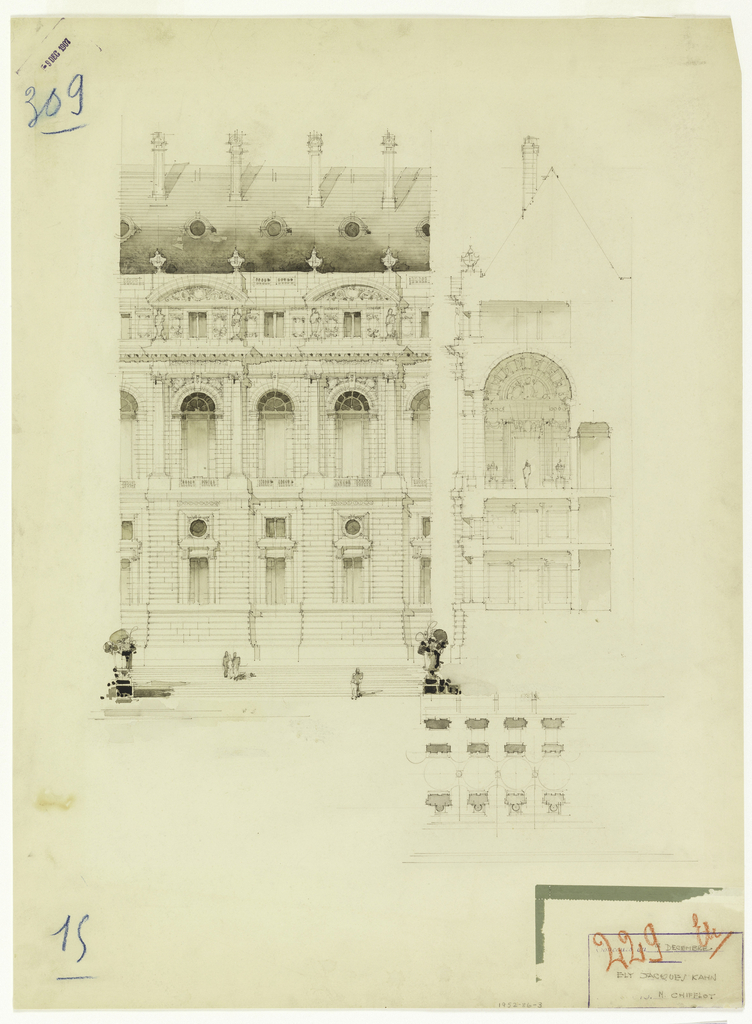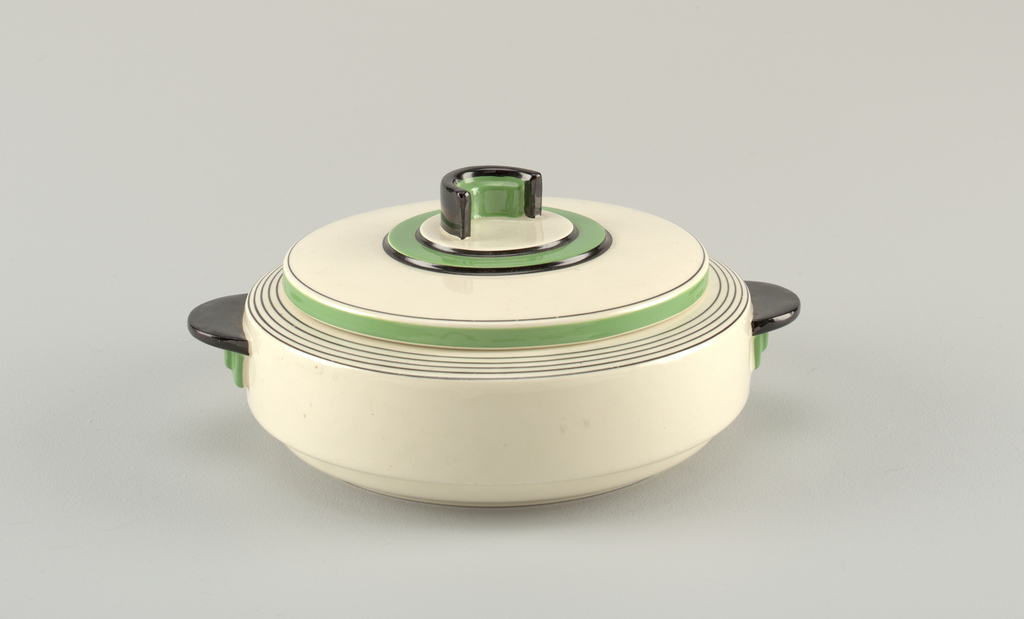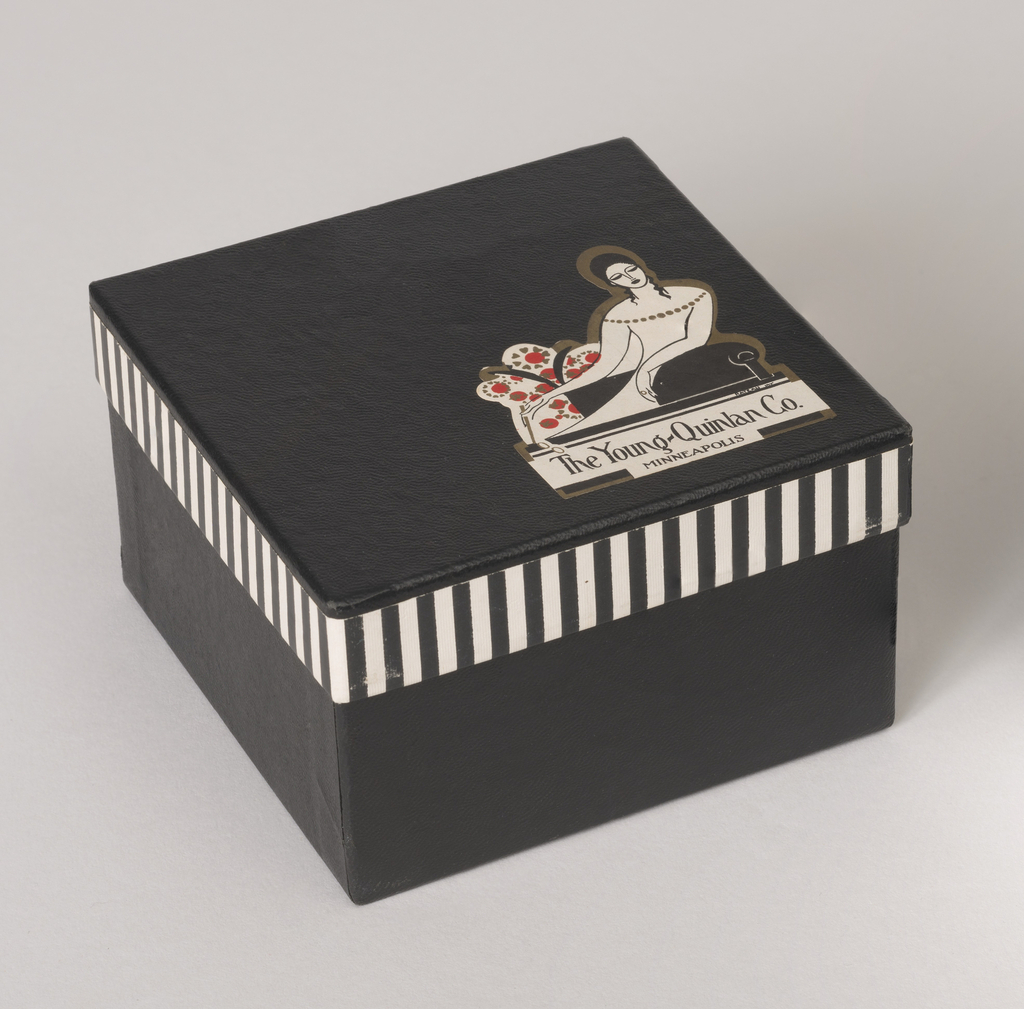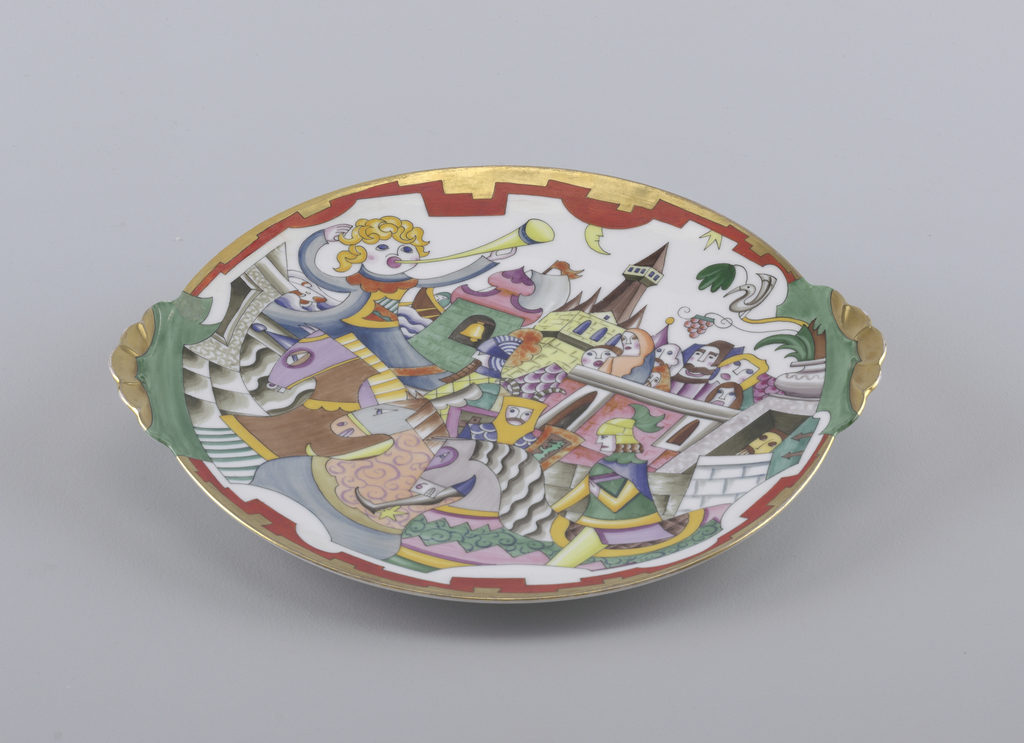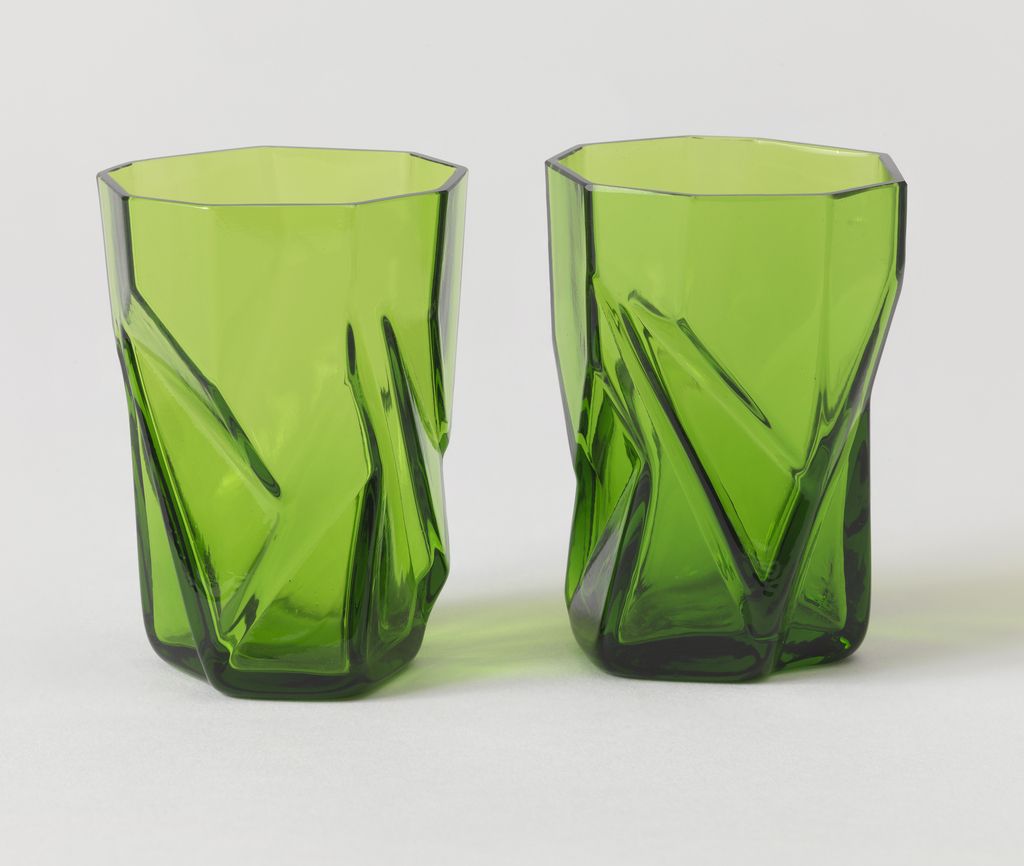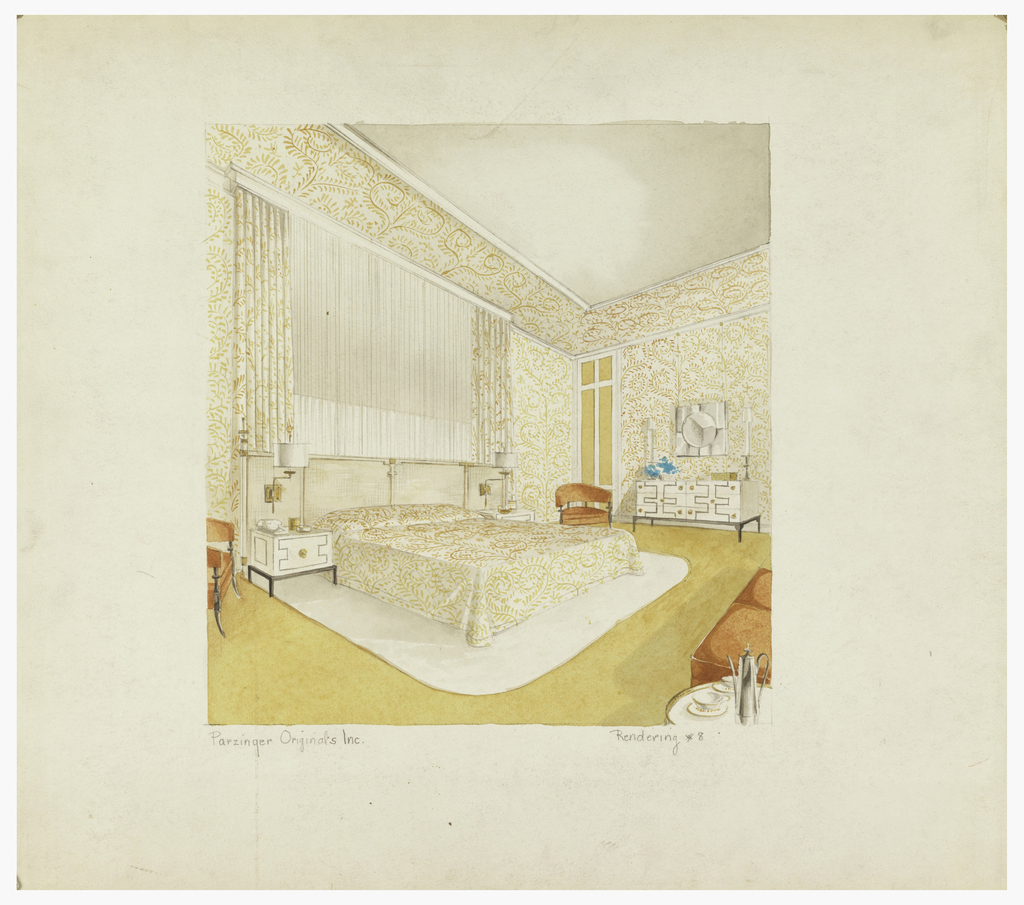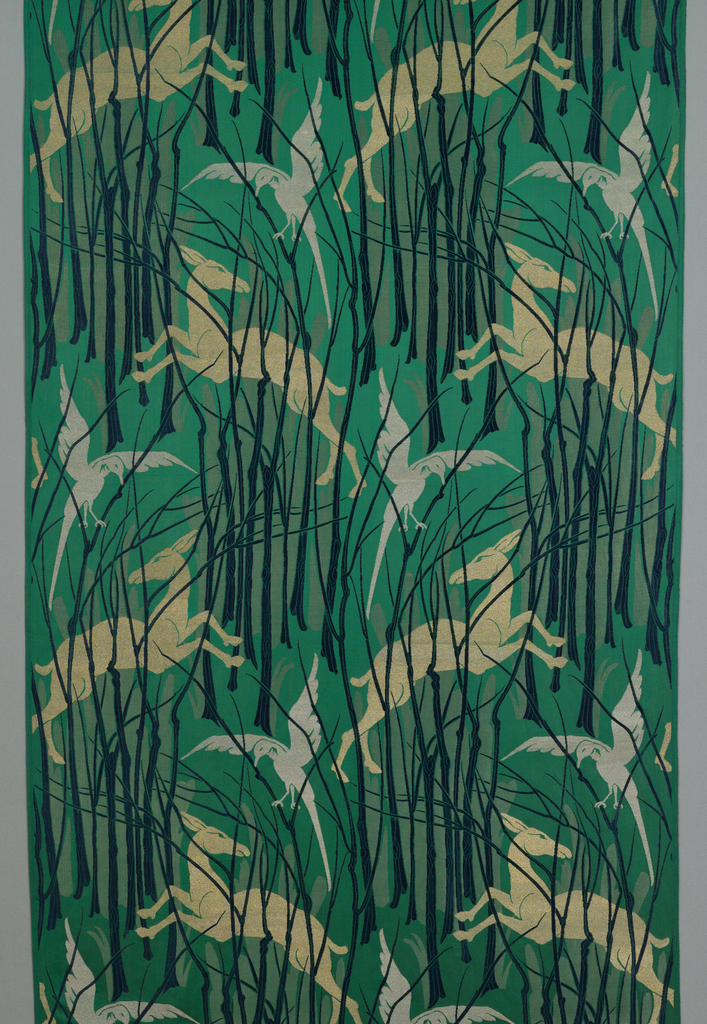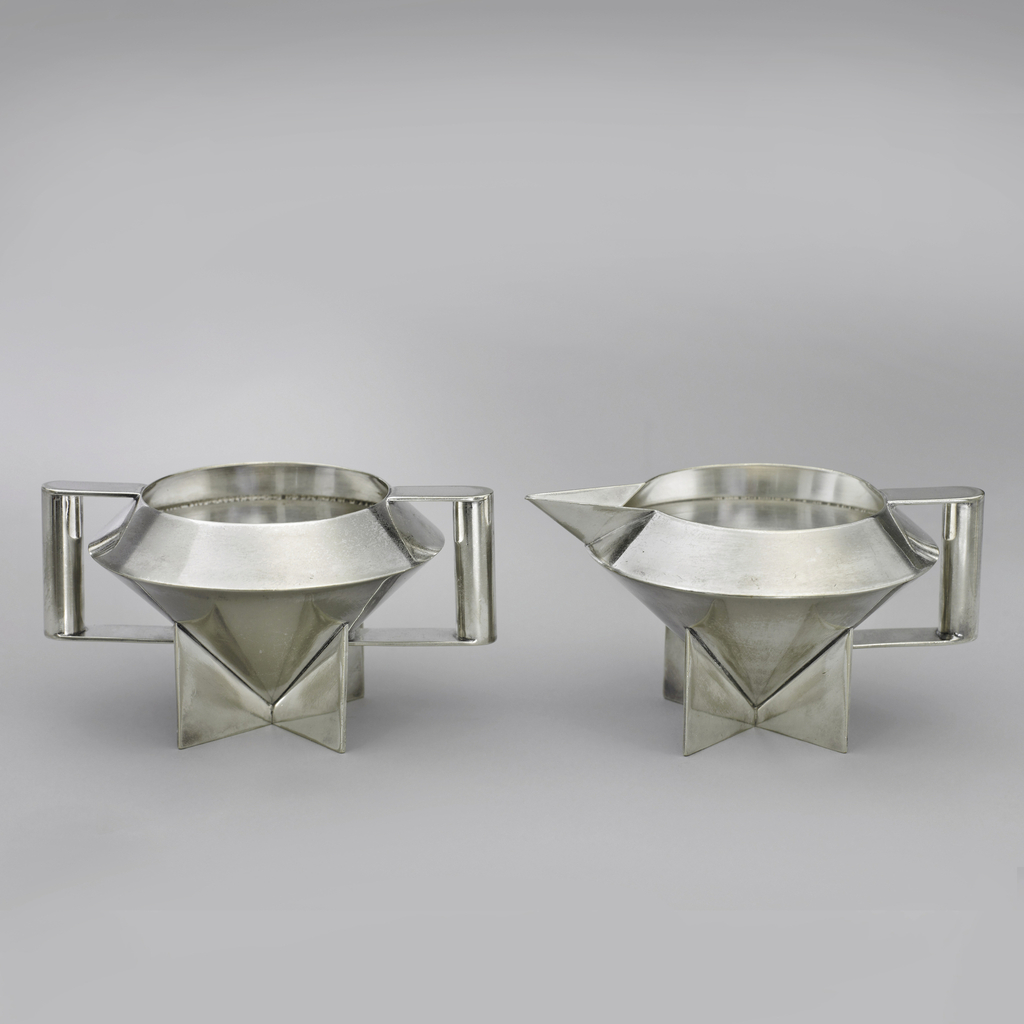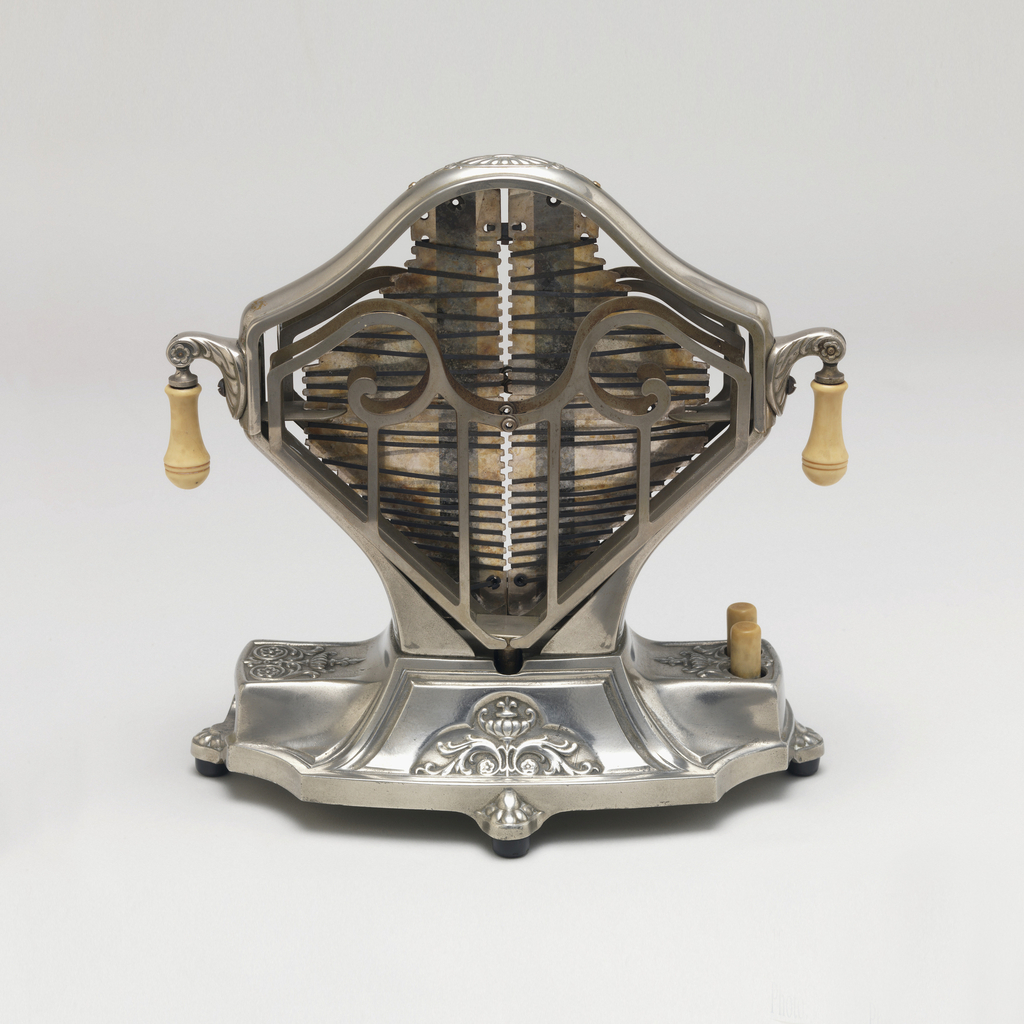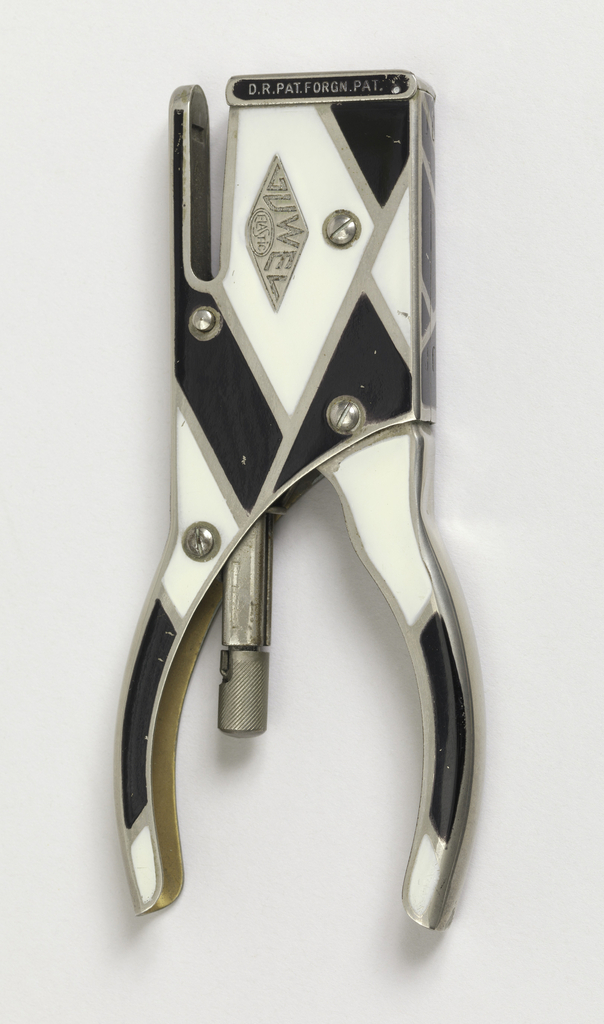Written by Joseph McPartlin There are many ways you can look at the modern world. Do you take a pessimistic or optimistic view? John Vassos questions his view of modernity in his 1931 illustrated book, Phobia. He uses “optimistic” Art Deco forms to convey twenty-three phobias as a “pessimistic” look into the modern world. John...
It is no coincidence that many of Lurelle Van Arsdale Guild’s 1930’s designs for aluminum tableware reflect his honed knowledge of traditional forms and ornament. Before becoming one of America’s top industrial designers of the early to mid-twentieth century, Guild was an antique furniture dealer and throughout his entire life, a collector and connoisseur of...
Ruth Gerth’s 1931 “Glow Lamp” for Chase Brass and Copper Company is a gleaming example of American modernism with a bit of a dirty secret. The conical shade is topped by a globular finial and clips on to an incandescent bulb, nestled into its fitting atop a spherical base with a horizontal band running around...
The Model 4083A clock made its debut at the 1933 A Century of Progress Chicago World’s Fair. Designed by Gilbert Rohde and manufactured by the Herman Miller Clock Company, a division of the Herman Miller Furniture Company, this sleek circular clock was one of seven modernist clocks designed by Rohde that were on display in...
This sweet little glass bowl evokes the shining, art deco optimism of the 1930s. Designed by Jean Luce and exhibited at the 1937 Exposition Internationale des Arts et Techniques dans la Vie Moderne, it speaks to the period’s interest in democratic materials and tells a story of increasing simplicity of form and decoration in design....
New York City Art Deco forerunner Ely Jacques Kahn (1884-1972) would have been nothing if it weren’t for the few formative years spent at Paris’ hallowed École nationale supérieure des Beaux Arts (National Superior School of Fine Arts); from 1908-1911. Contributing to Midtown Manhattan’s 1910 to 1930 building boom, the architect conceived more than a...
The September 1934 issue of The Pottery Gazette and Glass Trade Review features a full-page color advertisement devoted to “Casino” by Royal Doulton. This modern shape debuted a few years earlier and came in three patterns: “Marquis,” “Radiance,” and “Envoy.” Pictured in the advertisement is the earthenware tureen seen here in the museum’s collection. Decorated...
On February 19, 1927, the film “It,” starring Clara Bow, was publicly released in the United States, instantly becoming a box office success and making Clara Bow Hollywood’s first “It girl.” Later that year, Elizabeth C. Quinlan, co-founder of the Young-Quinlan Co., a prestigious Minneapolis department store, visited Paris in search of her own “It...
Covered with Franz von Zülow’s idiosyncratic decoration, this cake serving plate (part of a breakfast set in the Cooper Hewitt’s collection) demonstrates the Viennese artist and designer’s interest in fantasy and fairy tales. Knights on horseback move through a medieval village in the foreground, accompanied by a lively figure blowing a trumpet. The movement of...
Introduced at the 1928 Pittsburgh Glass and Pottery Exhibit, designer Reuben Haley’s Ruba Rombic forms epitomize the geometric style and ideals of American Art Deco. The Art Deco style, popularized by the 1925 Exposition Internationale des Arts Décoratifs et Industriels Modernes in Paris, which likely also inspired Haley, is often characterized by jagged lines and...
I was lucky enough to have lived with Tommi (Anton) Parzinger furniture as a teenager. I was raised in a modern house, and my mother worked with an interior designer who ordered several Parzinger pieces, a brass-studded sideboard, a brass chandelier and a coffee set. Today my sister has the sideboard and I have the...
American textile designer and collector Herman A. Elsberg (American, 1869–1938) designed this eye-catching furnishing fabric in the early 1920s. It was hand woven on a Jacquard loom at Elsberg’s factory in Lyon, France. Gold gazelles leap under the watchful eyes of silver falcons on a brilliant green ground scattered with clusters of leafless dark blue...
Who knew geometry could be so beautiful? This 1928 sugar bowl and creamer set epitomizes American modern design; yet, it is clearly influenced by the modern turn of European design from the same period, as evidenced by the Exposition internationale des Arts décoratifs et industriels modernes in Paris, 1925, as well as by Walter Gropius’...
Landers Frary & Clark was one of the first American companies to manufacture electrical home appliances: in 1908 they introduced an electric coffee percolator and 1912 saw the release of an electric iron. These new products added to the company’s line of household products that they had marketed since the 1890s under the trade name...
The design for this stapler was patented in the United States in 1934 by Fridolin Polzer who was at the time working for E.H. Hotchkiss Company, a leading manufacturer of stapling machines, based in Norwalk, Connecticut. In Japanese, the word for “stapler” is “hotchikisu” after the E.H. Hotchkiss Company, which first shipped staplers to Japan...
